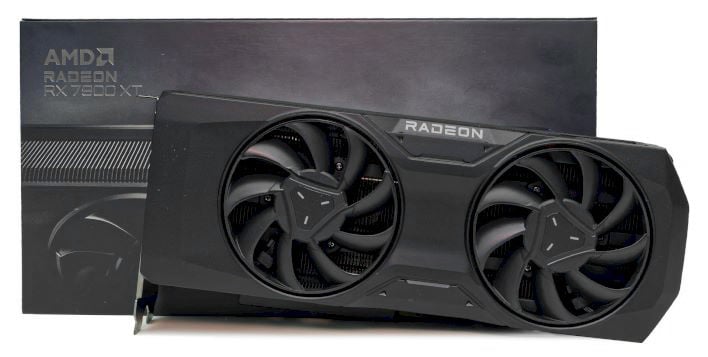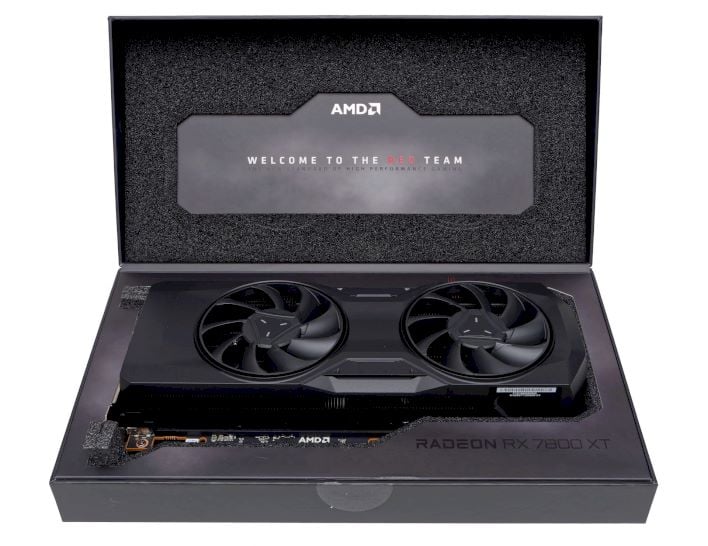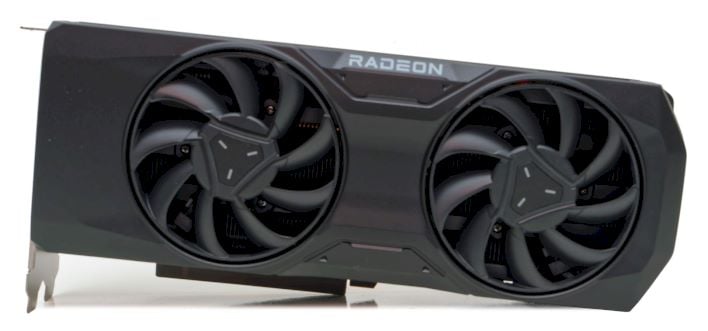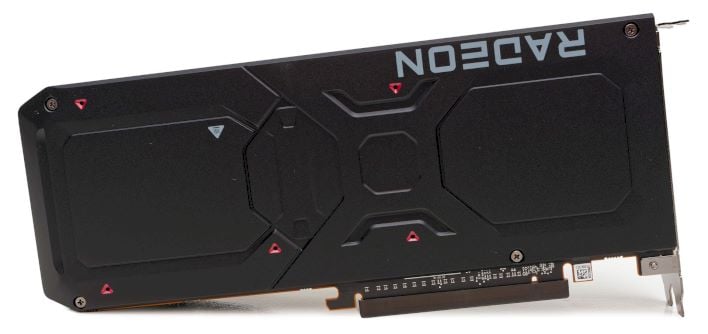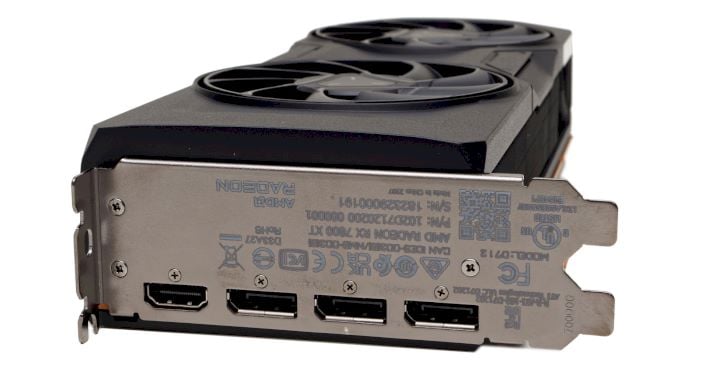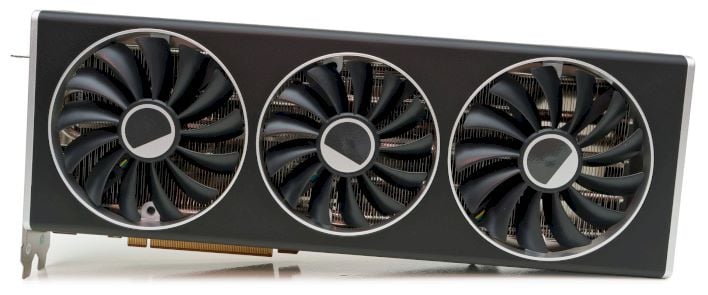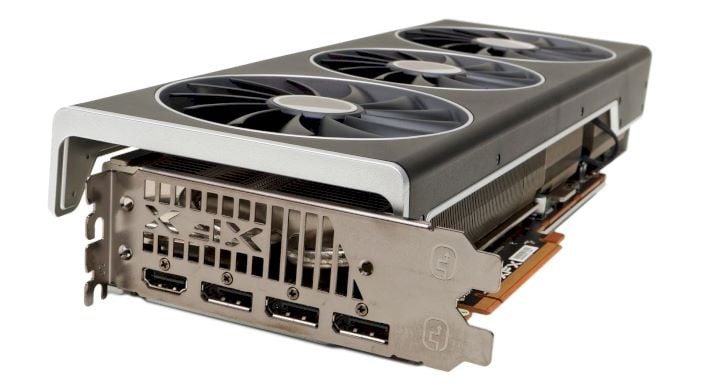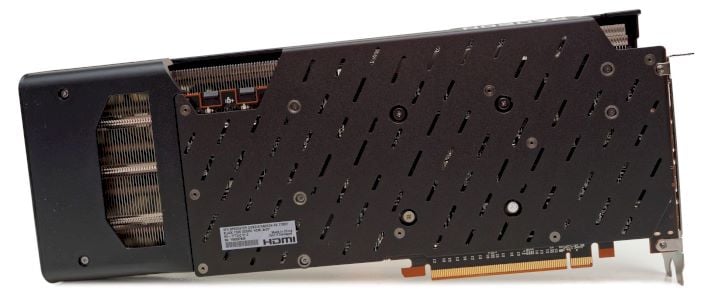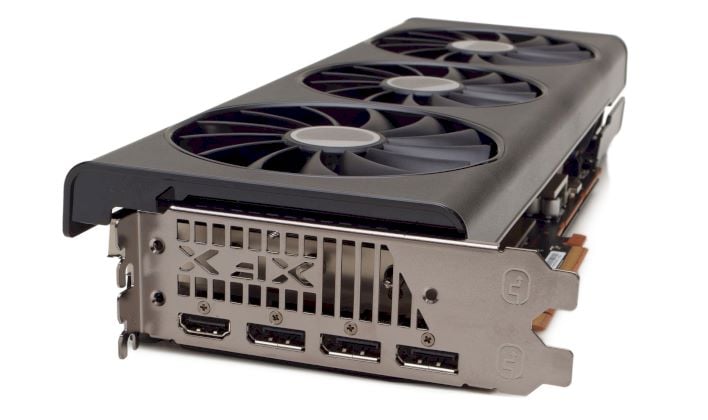Radeon RX 7800 XT And 7700 XT Review: Midrange AMD Gaming GPUs Put To The Test
Radeon RX 7800 XT & 7700 XT: RDNA3 For Enthusiasts And 1440p Gamers
| Radeon RX 7800 XT: Starting At $499, Radeon RX 7700 XT: Starting At $449 The new Radeon RX 7800 XT and 7700 XT are built on AMD's RDNA3-based Navi 32 GPU, and are competitive alternatives to the heart of NVIDIA's current midrange GeForce RTX 40 line-up.
|
|||

|

|
||
A few weeks back at Gamescom in Cologne, Germany, AMD officially unveiled the Radeon RX 7800 XT and Radeon RX 7700 XT, targeting gamers with 1440p displays. To quickly recap, the Radeon RX 7800 XT and Radeon RX 7700 XT solidify the middle of AMD’s current GPU line-up, to fill a big gap between the mainstream, affordable Radeon RX 7600 and high-end Radeon RX 7900 series. Radeon RX 7800 XT and Radeon RX 7700 XT cards are both based on the Navi 32 GPU, which shares the same RDNA3 architecture with its higher- (and lower) end siblings. Like the bigger Navi 31 employed in the Radeon RX 7900 series, AMD's Navi 32 GPU package consists of a larger "GCD" processor (5nm), surrounded by a few "MCD" chips (6nm) that provide both Infiniti Cache and a GDDR6 memory interface to the GCD. But, we are getting ahead of ourselves here.
First up, some specs and background, then we’ll take a look at the graphics cards we’ll be testing today...
AMD Radeon RX 7800 XT & 7700XT Features & Specifications
Before we continue, there are a few HotHardware articles we’d like to call out. We have already covered AMD’s previous RDNA 3-based graphics card launches and explained the finer details of the RDNA 3 architecture. We’ll summarize some of that info again here, but suggest checking out our previous coverage for the foundational details regarding the graphics architecture, AMD's chiplet approach, and features inherent to the new Radeon RX 7800 XT and 7700 XT.
- AMD Radeon RX 7900 XTX And 7900 XT Review
- AMD Radeon RDNA 3 Architecture Overview: Efficiency Is King
The specifications for both the Radeon RX 7800 XT and 7700 XT, compared to their previous-gen counterparts, are listed in the tabled above. The RX 7800 XT is a fully-enabled Navi 32 part with 60 compute units and a 256-bit memory bus (utilizing four MCDs, totaling 64MB of Infinity Cache). The Radeon RX 7700 XT is scaled back somewhat, and drops one MCD and 10% of its compute capability to give it 54 compute units, which are fed by a 192-bit memory bus and 48MB of Infinity Cache.
Reducing the memory bus width also means a reduction in memory capacity, so the RX 7800 XT's 16 GB gets chopped to 12 GB on the RX 7700 XT. That's the same memory capacity as the previous-generation RX 6700 XT, and it's also the same amount as NVIDIA applies to its current-generation "7"-tier cards. Note, however, that the memory operates at higher speeds on these newer cards, for a significant increase in bandwidth.
If you scrutinize the full specifications, you’ll see the Radeon RX 7800 XT and 7700 XT out gun their previous-gen counterparts in almost every way. Versus the Radeon RX 6800, the new 7800 XT has similar core counts, but leverages a newer architecture, and has higher clocks and more ROPs. And versus a Radeon RX 6700 XT, the new 7700 XT has more cores, ray accelerators, and ROPs, but slightly lower GPU clocks. Both the Radeon RX 7800 XT and 7700 XT, however, have less Infinity Cache. Due to the improved caching algo and higher actual memory clock, this shouldn’t hinder performance much, but nonetheless, there is less Infinity cache on-board.
The AMD Radeon RX 7800 XT
As for the cards themselves, we should note that AMD won’t be making a reference Radeon RX 7700 XT. All of the Radeon RX 7700 XTs that hit the market will come from board partners. The company is making a Radeon RX 7800 XT, however.AMD’s own Radeon RX 7800 XT has the same design language and industrial design as the higher-end cards in the Radeon RX 7900 series. The Radeon RX 7900 series cards are larger and feature a third cooling fan, and more robust vapor chambers and fin stacks, but the vide is very similar.
The mostly-black design, with angular fan shrouds looks great in our opinion. And the out-of-box experience is definitely better than previous-gen Radeons. As you can see in the images of the top and bottom card edges, the Radeon RX 7800 XT’s fin-stack spans nearly the entire length of the card. And like its big brothers, the fin stack is also black save for three fins that are painted Radeon Red near the card’s dual 8-pin PCIe power connectors.
Above the fin stack, the Radeon RX 7800 XT features dual axial fans. In practice the cooler on the card performs quite well. The fans will spin down during idle times, which makes the 7800 XT effectively silent. Under load, the fans will spin up, but when inside a chassis alongside other fans, they aren’t particularly loud at all. There’s definitely a noticeable whir, but noise output is in-line with other high-end GPUs and won’t be a concern for most users.
AMD’s isn’t the only Radeon RX 7800 XT we’ll be showing you here, however. We also got our hands on an XFX MERC 319 Radeon RX 7800 XT.
The XGX MERC 319 Radeon RX 7800 XT
As you’d expect, the MERC 319 Radeon RX 7800 XT is just like AMD’s own card in terms of its features and architecture. Both cards share the same base feature set and have somewhat similar power and performance targets, give or take a few percentage points. XFX’s card, however, is MUCH larger.In addition to the different PCB and cooler designs, the XFX MERC 319 7800 XT ups the expected frequencies from AMD’s reference 2,124MHz game clock and 2,430MHz boost clock, to "up to” 2,254MHz and 2,565MHz, respectively. The total board power is slightly higher (287W) than AMD’s reference card at 263W, and the memory clock and capacity are similar as well, with 16GB at an effective data rate of 19.5Gbps.
While those frequency differences seem pretty big, in the real world, AMD’s reference card consistently scales to frequencies higher than the conservative papers spec, so actual performance isn’t too far apart, though the XFX card was faster overall, as you’ll see shortly.
To support those higher clocks and power, the XFX MERC 319 Radeon RX 7800 XT employs a full digital 15 phase PWM, to ensure the GPU and memory have stable power delivery. There are also thermal pads incorporated throughout the card for components on both the front and back of the PCB – there are 14 thermal pads used in total, to aid in cooling the memory and VREGs. Those thermal pads make contact with the PCB components, back plate, and large heatsink fin stack.
A large, nickel-plated copper vapor chamber makes direct contact with the GPU and massive array of heatsinks is linked together via multiple heat-pipes and the whole assembly runs the entire length of the card. Atop the heatsinks are three axial fans, two 100mm and one 90mm, and the entire shroud and back plate assembly is made of cast aluminum.
Although the C is built like a tank and as solid as they come, all of the weight that comes by way of a massive cooler which can place a lot of stress on an expansion slot. To that end, XFX includes what they’re calling a “Z Support Bar System” that wraps around the entire card and screws into a chassis for additional support.
All told, the dimension of the XFX MERC 319 Radeon RX 7800 XT come in at a whopping 12.85 x 4.96 x 2.28, making it one of the longest graphics cards we’ve tested and bigger than AMD’s cards in every dimension. If the XFX MERC 319 Radeon RX 7800 XT seems like a card you’d want to buy, be sure it will fit in your chassis – we had to bend the drive cage on our test-rig’s chassis to shoehorn the card into the system.
Other cool features of the XFX MERC 319 Radeon RX 7800 XT include a dual BIOS switch (one for backup) and integrated lighting. The display outputs are similar to AMD’s card, though. The XFX MERC 319 Radeon RX 7800 XT is packing three full-sized DisplayPorts (2.1) and an HDMI ports (2.1a). The power connector situation is also the same, with two standard 8-pin PCIe power leads required to feed this beast.
XFX QICK 319 Radeon RX 7700 XT
Next up we have the XFX QICK 319 Radeon RX 7700 XT. As we’ve mentioned, there won’t be any AMD-built 7700 XTs, so every one of them to hit store shelves will be different and come by way of a third-party board partner.At first glance, the XFX QICK 319 Radeon RX 7700 XT has a similar look to its big brother, and it’s certainly ginormous, but the 7700 XT is much lighter and uses less metal in its shroud.
It does have metal backplate, however, a large fin-stack with multiple-heat pipes that covers the entire front of the PCB, and a triple-fan design. With all that cooling capacity, XFX also cranks the clocks on the QICK 319 Radeon RX 7700 XT, up from AMD’s reference spec of 2,171MHz (game clock) and 2,544MHz (boost clock) to 2,276MHz and 2,599MHz. XFX’s card is also treated to a 20W boost to total board power – 265w (XFX) vs. 245w (AMD reference spec).
Display outputs are similar to the 7800 XT cards, and the QICK 319 Radeon RX 7700 XT also requires a pair of 8-pin PCIe power feeds. There’s a BIOS switch on this card too, but at this time it’s simply a backup of the main BIOS and doesn’t alter frequencies, power, or the fan curve.
And with all of that out of the way, let’s get to some numbers...

